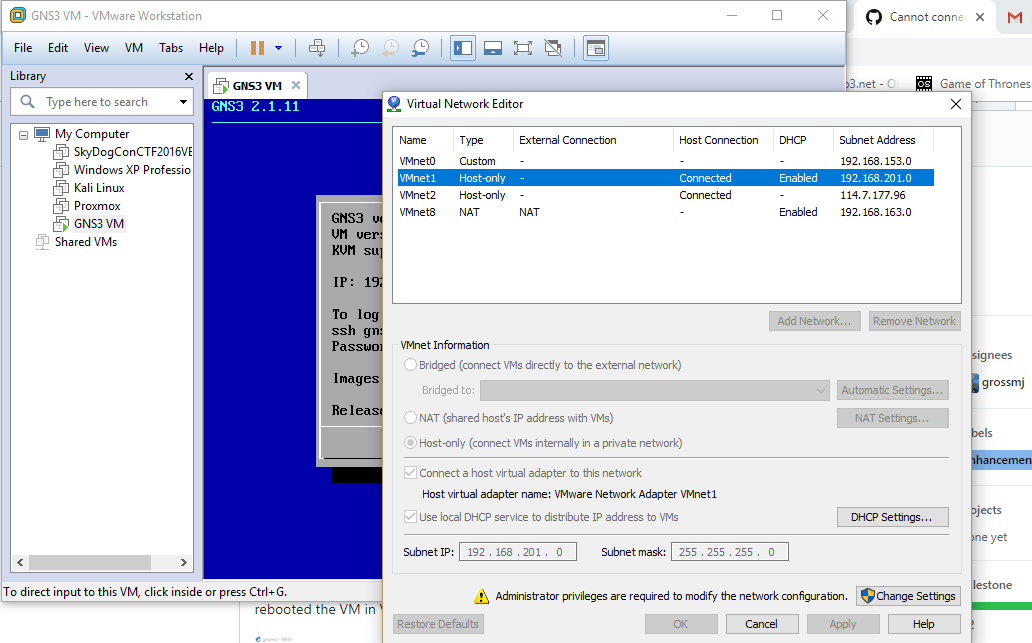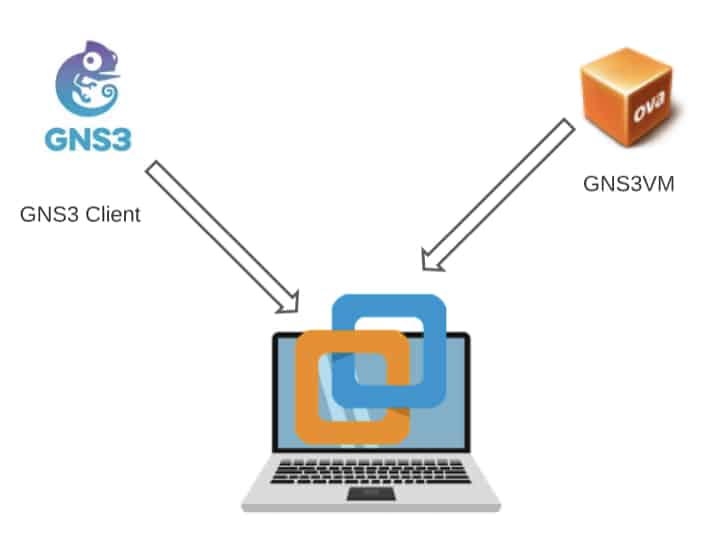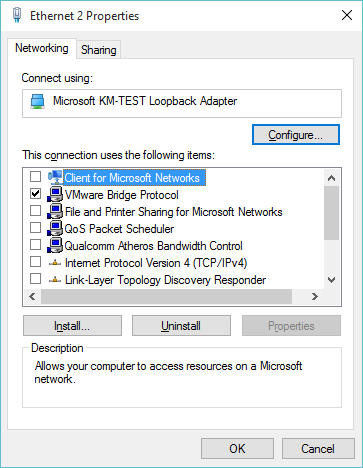

- GNS3 HOST BINDING INSTALL
- GNS3 HOST BINDING SOFTWARE
- GNS3 HOST BINDING DOWNLOAD
- GNS3 HOST BINDING WINDOWS
GNS3 HOST BINDING DOWNLOAD
This will go to the site containing the image file and download it. Select the version and click the Download button.
GNS3 HOST BINDING INSTALL
After verifying the server requirements click Next to continue the installation.Īt this point it’s time to install the image file for the OpenWRT appliance. This is where we can specify whether we want to run it on a remote server, in a GNS3 VM, or on the local machine. Now select the Server type to run the appliance and click Next. Review the information on the first screen which shows the category, vendor, architecture, and KVM status for that appliance, and click Next. To add the OpenWRT router, click Import an appliance template file. Other options for adding appliances without a template include IOS devices, VMs, and Docker containers. From here we can import template files like the gns3a file downloaded from the Marketplace. Now that we have some appliances let’s build a small and simple topology using the templates and images we just downloaded.Īfter the initial setup the New appliance template window will open. However, a simple web search will point to the RPM package. You may also need to install Dynamips which is not included in the official repos. For links and guides to legally download Cisco IOS, check out David Bombal’s site at. To use Cisco appliances a service agreement or subscription to VIRL is needed to download the IOS images from Cisco.

You can also find images for many other distributions such as CentOS, Ubuntu, and Kali Linux. For this article we’ll use the Fedora 64-bit VMWare image. has a variety of pre-built VMWare images (VMDK) that are compatible with GNS3. You can also install OS nodes without a template, or create your own. Appliance templates are JSON files with the extension gns3a. Select the template for that appliance to download. However, let’s download an appliance to see how it works.įirst, select the appliance you want (the examples in this article will use OpenWRT). The options in the Marketplace are vast and beyond the scope of this article.
GNS3 HOST BINDING SOFTWARE
The marketplace contains appliances, pre-configured labs, and software for use with GNS3. Finding appliances in the GNS3 Marketplaceīefore venturing into the GUI, this would be a good time to visit the GNS3 Marketplace. Click the Finish button to complete the setup. The last screen in the wizard will provide a summary. Once the settings are verified, a confirmation will appear stating the connection to the local server was successful.


However, for a quick setup it’s best to accept the defaults. These settings can be tweaked to match your setup. Here we see the path to the application installed locally on the server, host binding address, and port. The next screen configures the application to connect to the local machine running GNS3 server. The examples in this article are performed on the local machine. The options on the first screen allow users to either setup an isolated VM environment, run the topologies from the local computer, or to use a remote server. Opening GNS3 for the first time will open the Setup Wizard. When the installation is complete, an icon will be placed among the applications for GNS3. To use Spice/VNC as a console install the virt-viewer package. This allows the software to utilize the computer’s hardware to increase the performance when running the appliances. GNS3 requires a computer with virtualization capabilities. The dedicated servers can be installed on bare-metal or as a virtual machine. This is useful for teams to collaborate while working on a project, or problem. The reason for the separate packages is because GNS3 can be configured as a dedicated server. From the command-line type: sudo dnf install gns3-server gns3-gui Installationįor Fedora users, GNS3 can be easily installed from the official repository. This adds great credibility to the power and reliability this open-source tool provides. Even renown banks and telecom companies are included in the list. Companies using it span from tech businesses like Intel, to scientific organizations like NASA. If you’re designing and testing proof-of-concept ideas, recreating environments for troubleshooting, or want to delve into the world of network engineering, GNS3 might be for you.Īs seen on their website, GNS3 is well acquainted in the enterprise world. GNS3 also has the capability to utilize containers.
GNS3 HOST BINDING WINDOWS
These appliances range from Cisco routers and switches to nodes such as Windows Server, CentOS, and Fedora. The software can virtualize or emulate a variety of systems called appliances. GNS3 is an amazing tool that allows IT professionals to, quite simply, create a virtual lab.


 0 kommentar(er)
0 kommentar(er)
